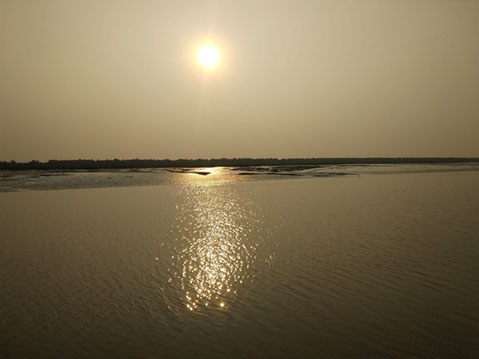The Importance of Local Management for a Vibrant Ecosystem and Thriving Communities
The Sundarbans is a unique and ecologically important region located in the delta of the Ganges, Brahmaputra, and Meghna rivers in India and Bangladesh. With the world’s largest mangrove forest, the Sundarbans is home to a variety of plants and animals, including the Bengal tiger. In addition to its ecological significance, the Sundarbans is an important economic and cultural resource for the local people who call it home. Around 4 million people live in the region and rely on the natural resources of the Sundarbans for their livelihoods, including fish, shrimp, honey, and other products harvested from the mangrove forests.
The management of the Sundarbans by local people is vital for the health and well-being of the region and its inhabitants. Local communities have long relied on the Sundarbans for their livelihoods and have developed sustainable strategies for resource management, including traditional practices such as fishing, farming, and forestry, as well as more modern approaches like ecotourism and conservation efforts.
Despite these efforts, the Sundarbans faces challenges that threaten its sustainability. Climate change is causing sea levels to rise and leading to increased flooding in the region, damaging the mangrove forests and disrupting the livelihoods of local people. Industrialization and urbanization also pose threats, causing pollution and habitat loss in the Sundarbans. The expansion of infrastructure and development also jeopardizes the natural resources and local communities that depend on them.
To address these challenges, it is crucial that local communities are actively involved in the management of the Sundarbans. This includes participating in decision-making processes, collaborating with government and non-governmental organizations, and implementing sustainable resource management practices. In recent years, initiatives such as training programs, community-based conservation projects, and the establishment of local organizations to advocate for the rights of local communities have aimed to support the management of the Sundarbans by local people.
By supporting the management of the Sundarbans by local people, we can help ensure the long-term health and well-being of this unique and ecologically important region while also preserving the cultural and economic livelihoods of local communities. The Sundarbans is a valuable resource that must be protected and managed sustainably in order to preserve it for future generations.



Thank you for your post. I really enjoyed reading it, especially because it addressed my issue. It helped me a lot and I hope it will also help others.
I really like looking through a post that can make people think. Also, thanks for allowing for me to comment!